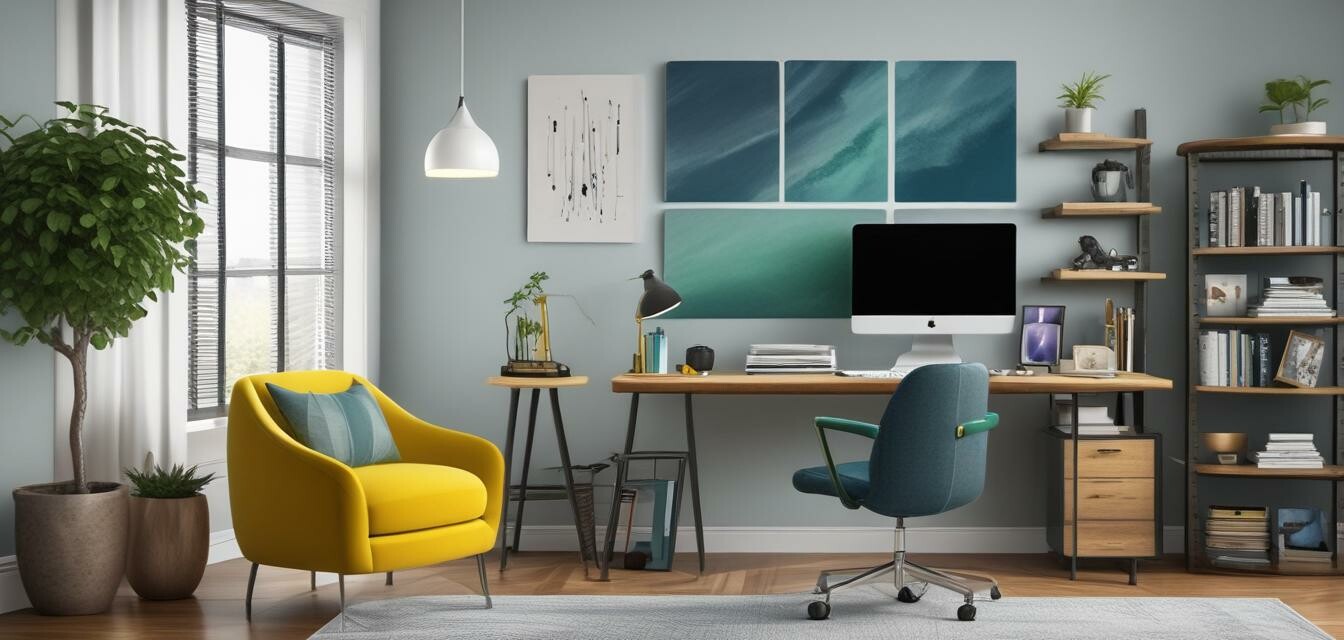
The Psychology of Color in Home Office Design
Key Takeaways
- Colors significantly influence mood and productivity.
- Shades such as blue and green are ideal for concentration.
- Choosing the right color can enhance creativity and reduce stress.
- Personal preferences play a crucial role in color choices.
- Consider lighting and space when selecting colors for your home office.
Understanding the psychology of color can vastly improve not just the aesthetic appeal but also the functionality of your home office. The colors you choose to surround yourself with have profound effects on your mood, productivity, and overall efficiency while working. This article delves into the nuances of color psychology, offering valuable insights into how to select the best shades for your workspace.
The impact of color on mood and productivity
Colors evoke emotions and behaviors that can either support or hinder your productivity. Experts in color psychology suggest that the right shades can shift your focus, inspire creativity, and reduce stress levels. Let's explore some of the key colors and their psychological effects in a typical home office setup.
| Color | Psychological Effect | Best Uses |
|---|---|---|
| Blue | Calmness, Focus | Ideal for concentration-heavy tasks |
| Green | Balance, Harmony | Perfect for long working hours with eye comfort |
| Yellow | Energy, Creativity | Great for enhancing creative processes |
| Red | Passion, Motivation | Useful for task-oriented work but should be limited |
| Gray | Neutrality, Dullness | Good as a backdrop, especially when paired with bolder colors |
Choosing the best shades for your setup
When deciding on colors for your home office, consider the primary function of the space. Different hues can be leveraged strategically to amplify productivity based on the type of work you perform. Here are some practical tips for selecting shades:
Tips for selecting office colors
- Assess your work style: Identify what activities you do most to tailor color selection.
- Incorporate personal preferences: Personal comfort is key; choose colors that resonate with you.
- Experiment with accent colors: Consider using softer tones for walls and vivid colors for furniture or decor.
- Factor in natural light: Evaluate how much light the room gets to see how colors will appear.
- Test with samples: Always sample paint on your walls before making a commitment.
Trends in home office color schemes
Today’s trends in home office design have shifted towards creating environments that are not just functional but also aesthetically pleasing. Popular color trends include:
- Earthy tones: Warm neutral shades that promote calmness and creativity.
- Vibrant accents: Bright touches in an otherwise pale space to foster energy.
- Monochromatic schemes: Using various shades of a single color for a unified aesthetic.
- Biophilic trends: Greens and browns inspired by nature to create a refreshing vibe.
Examples of color combinations
Below are some popular color combinations that work well in home offices:
| Base Color | Accent Color | Effect |
|---|---|---|
| Soft Blue | Bright Yellow | Calming but energizing |
| Warm Gray | Rich Green | Balanced and refreshing |
| Off-White | Deep Navy | Classic and productive |
| Pale Peach | Dark Teal | Inviting and creative |
Final thoughts
Choosing the right color for your home office can make a significant impact on your working experience. By understanding the psychology of color and its effects, you can create an inspiring workspace that enhances productivity and aligns with your personal style. Always remember that individual preferences matter significantly, so don’t hesitate to customize your office according to your unique taste.
For more insights on optimizing your workspace, check out our articles on setup inspiration and explore the latest products in docking stations and ergonomic chairs.